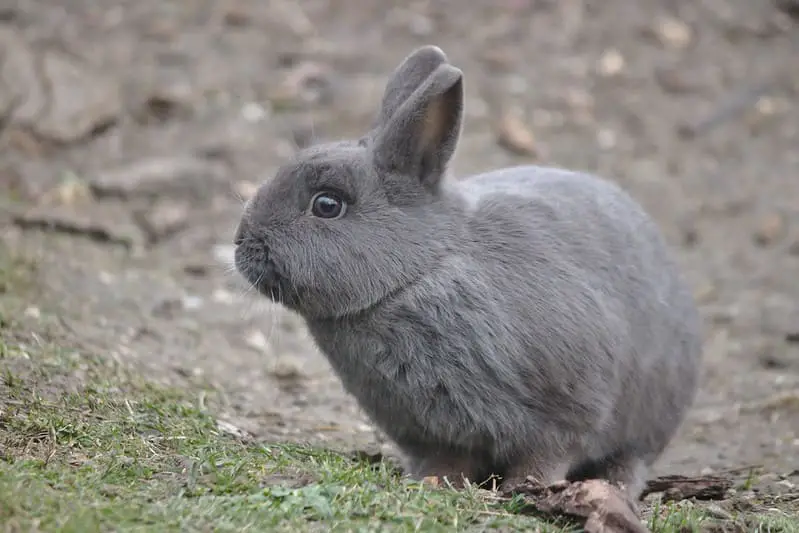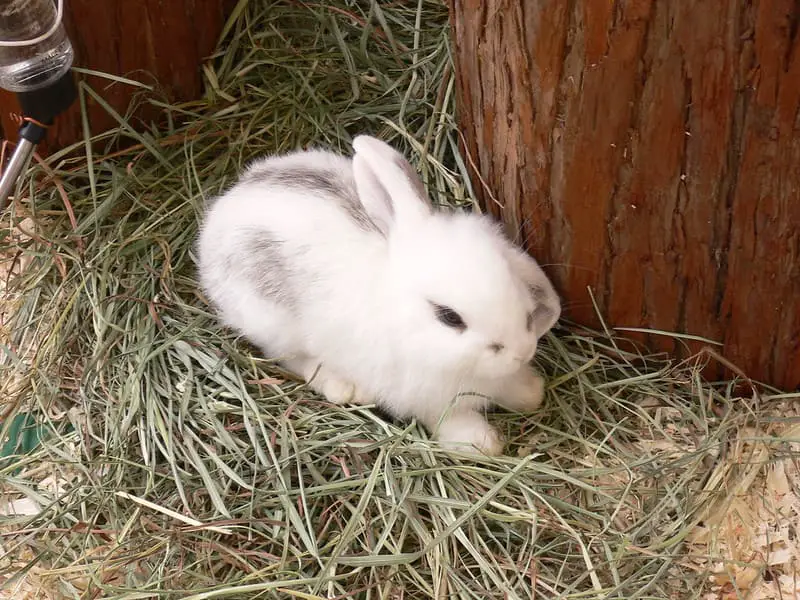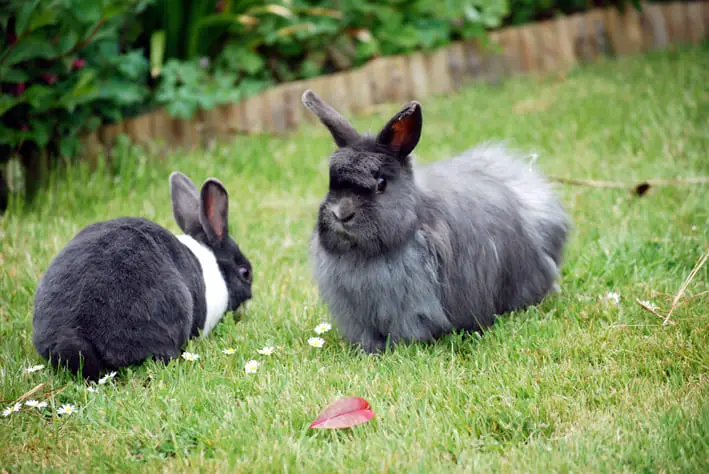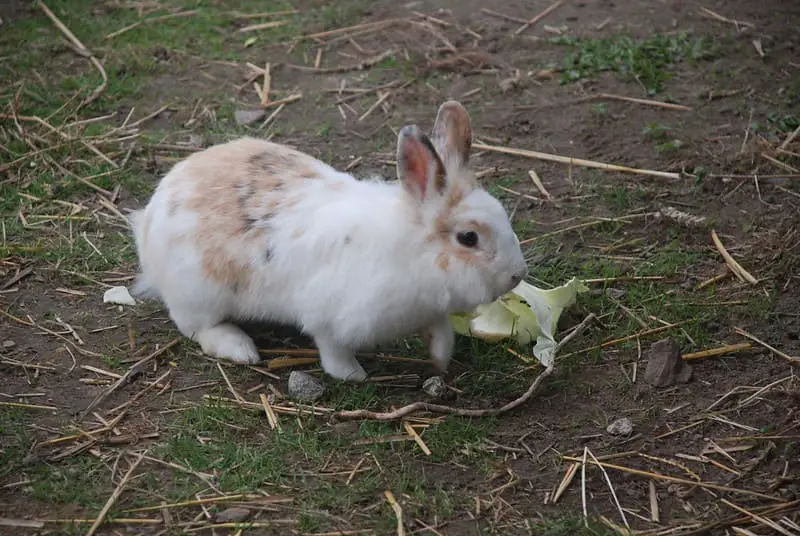Keeping a rabbit as a pet is a delightful experience for many. These small, furry creatures are known for their gentle nature, fluffy tails, and long ears. When you have a pet rabbit, one of the questions that often arises is whether you can let your rabbit run loose outside. While it might seem like a great idea to let your bunny hop around in the open, there are several factors to consider before making this decision. In this comprehensive guide, we will explore the pros and cons of letting your rabbit run loose outside, discuss the safety and health considerations, and provide tips for responsible outdoor play.

Pros and Cons of Letting Your Rabbit Run Loose Outside
Pros:
- Exercise and Mental Stimulation: Outdoor playtime can provide your rabbit with more space to exercise, explore, and stimulate their senses. This can be especially beneficial for their physical health and mental well-being.
- Natural Environment: Rabbits are prey animals in the wild, and being outside can help them connect with their natural instincts. The exposure to sunlight and fresh air can also be a positive factor.
- Social Interaction: Playing with your rabbit outside can enhance the bond between you and your pet. It provides an opportunity for interaction and can be a fun experience for both you and your bunny.
- Variety in Diet: Rabbits can nibble on a variety of fresh grasses and plants, which can supplement their diet with natural, healthy greens.
Cons:
- Predators: The most significant concern when letting a rabbit roam outside is the presence of predators. Foxes, dogs, birds of prey, and even domestic cats can pose a severe threat to your pet.
- Disease and Parasites: Wild animals may carry diseases or parasites that can harm your rabbit. Even seemingly harmless insects like fleas can transmit health issues.
- Escape: Rabbits are skilled escape artists. They can dig, jump, and squeeze through small openings to get away, leading to their disappearance or potential harm.
- Unfamiliar Environment: Rabbits are sensitive animals, and the outdoors can be overwhelming for them. The noise, temperature variations, and strange surroundings can cause stress and anxiety.
- Weather Conditions: Extreme weather conditions can be harmful to your rabbit. They are susceptible to heatstroke in hot weather and can suffer from hypothermia in cold weather.
- Poisonous Plants: Your garden may contain plants that are toxic to rabbits. If your rabbit nibbles on these plants, it can lead to poisoning.
- Dietary Concerns: While access to fresh grass is a pro, overeating on grass or other vegetation can cause digestive problems, such as gastrointestinal stasis.
- Legal Considerations: Depending on where you live, there might be local regulations or laws regarding keeping rabbits outdoors.

Safety Considerations for Outdoor Play
If you decide to let your rabbit run loose outside, it is essential to prioritize their safety. Here are some safety considerations to keep in mind:
- Secure Enclosure: Invest in a secure outdoor enclosure, such as a rabbit run or a hutch with a run attached. Make sure it has a sturdy bottom to prevent digging.
- Supervision: Never leave your rabbit unattended outside. You must keep a close eye on them at all times to ensure their safety.
- Predator Protection: Make sure the enclosure is predator-proof. Use wire mesh with small openings to prevent animals from entering. Cover the top to protect against birds of prey.
- Weather Protection: Ensure your rabbit has access to shade and shelter. They should be able to escape the sun, wind, or rain as needed.
- Regular Health Checks: Examine your rabbit for any signs of injury, illness, or stress after outdoor playtime. Pay attention to changes in behavior or appetite.
- Clean Environment: Keep the outdoor area clean to prevent the buildup of waste and to deter pests.
- Poisonous Plants: Remove any potentially harmful plants from the area where your rabbit plays. Be aware of common toxic plants in your region.
- Escape Prevention: Check the enclosure regularly for any potential escape routes or weaknesses in the fencing. Rabbits are clever at finding ways to escape.
- Social Interaction: Spending time with your rabbit during outdoor play is essential for their safety and well-being. They feel more secure with your presence.
- Consistent Routine: Establish a consistent routine for outdoor playtime to help your rabbit adapt to the environment and reduce stress.
Health Considerations
In addition to safety, you should also consider the impact of outdoor play on your rabbit’s health. Here are some health considerations to keep in mind:
- Vaccinations: Depending on your location and the local rabbit population, vaccinations may be necessary to protect your rabbit from diseases like myxomatosis and rabbit hemorrhagic disease. Consult with your veterinarian.
- Parasite Control: Outdoor rabbits are more susceptible to parasites, such as fleas and ticks. Implement a parasite control program as recommended by your veterinarian.
- Dietary Balance: Ensure your rabbit maintains a balanced diet. While outdoor access to fresh grass is beneficial, overeating can cause digestive issues. Monitor their intake and provide a balanced diet.
- Hydration: Ensure your rabbit has access to clean water at all times. They can become dehydrated quickly, especially in hot weather.
- Heat and Cold Protection: Be mindful of extreme weather conditions. Provide shade and water in hot weather and ensure your rabbit is protected from cold temperatures and wind in cooler seasons.
- Stress Reduction: Keep an eye on your rabbit’s stress levels. Some rabbits may become stressed in new or unfamiliar environments. If you notice signs of stress, consider limiting outdoor playtime.

Tips for Responsible Outdoor Play
If you’ve decided that outdoor play is suitable for your rabbit, here are some tips to ensure responsible and enjoyable playtime:
- Training: Train your rabbit to come to you when called. This can be invaluable if they wander too far or seem hesitant to return to their enclosure.
- Use a Leash and Harness: Some rabbit owners use a leash and harness designed for small animals to allow their pets to hop around while still maintaining control.
- Start Small: If your rabbit is not used to outdoor play, start with short sessions to allow them to adjust to the new environment gradually.
- Introduce Toys: Provide toys and objects for your rabbit to explore and interact with. This can keep them mentally stimulated.
- Rotate Play Areas: Change the area in which your rabbit plays to provide new experiences and reduce the risk of overgrazing.
- Play with Other Pets: If you have other pets, introduce them gradually to ensure they get along with your rabbit.
- Regular Check-ups: Schedule regular vet check-ups to monitor your rabbit’s health, especially if they spend a significant amount of time outdoors.
- Hygiene: Ensure your rabbit is clean and dry after outdoor play to prevent skin and fur issues.
- Observe Local Wildlife: Be aware of the local wildlife in your area and take steps to protect your rabbit from potential dangers.
- Enjoy Together: Make outdoor playtime a fun and enjoyable experience for both you and your rabbit. Interact with them, talk to them, and create a positive environment.

Alternatives to Outdoor Play
If you’re concerned about the risks of letting your rabbit run loose outside, there are alternative ways to provide mental and physical stimulation for your pet:
- Indoor Playtime: Create a safe and secure indoor play area for your rabbit. Provide toys, tunnels, and items for them to explore.
- Supervised Indoor/Outdoor Play: You can also allow your rabbit to explore a controlled, rabbit-proofed indoor/outdoor space, such as a porch or enclosed patio.
- Walks on a Leash: Train your rabbit to walk on a leash and harness, allowing you to take them for walks in your yard or a safe area.
- Play with Other Rabbits: If you have multiple rabbits, they can interact and play with each other, providing social interaction and exercise.
- Interactive Toys: Use interactive toys and puzzles designed for rabbits to keep them mentally stimulated.
- Training and Tricks: Teach your rabbit tricks and commands to keep their mind engaged.
Conclusion
The decision to let your rabbit run loose outside is one that should be made carefully, taking into consideration the pros and cons, safety and health considerations, and the individual needs and personality of your rabbit. While outdoor play can offer numerous benefits, it also comes with risks that require responsible pet ownership and vigilant supervision.
If you decide to provide outdoor playtime for your rabbit, prioritize safety by using secure enclosures, supervising your pet, and protecting them from predators and extreme weather conditions. Regular vet check-ups and a balanced diet are essential for maintaining your rabbit’s health. Alternatively, you can explore indoor playtime and other stimulating activities to keep your rabbit happy and healthy while minimizing the risks associated with outdoor play.
Ultimately, the well-being of your pet should be the top priority, and the decision to let your rabbit run loose outside should be based on what is best for their physical and emotional health. Be an attentive and responsible rabbit owner, and your bunny will thrive in a loving and safe environment.
